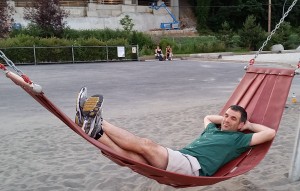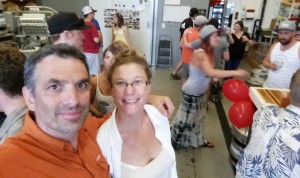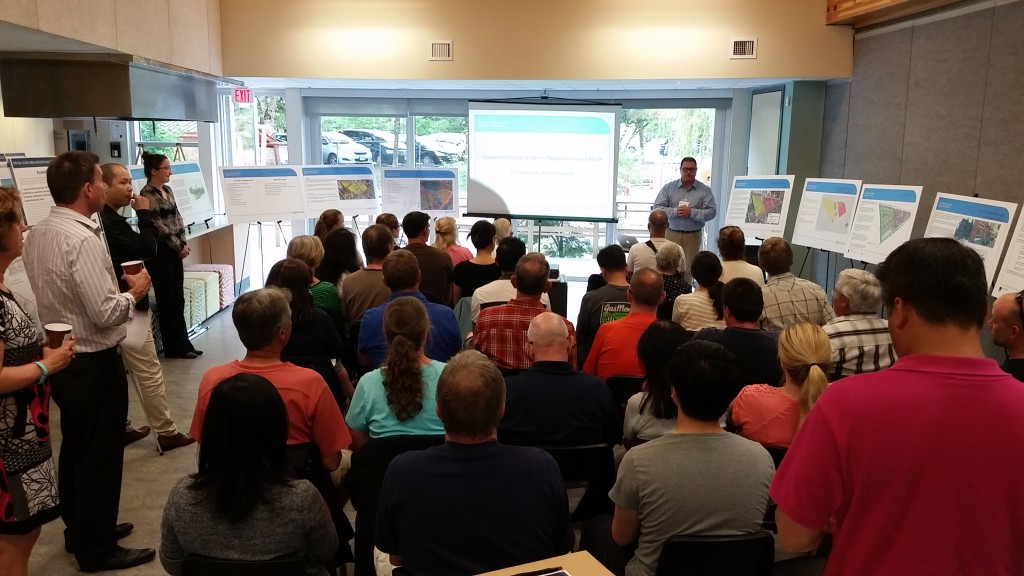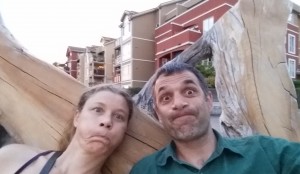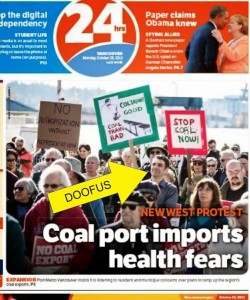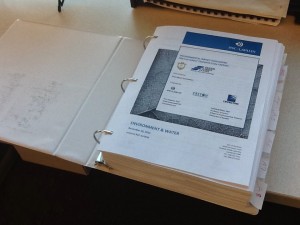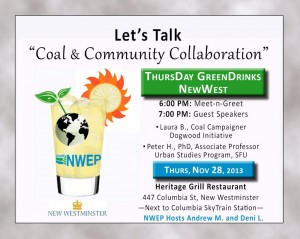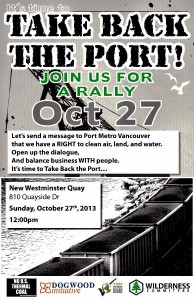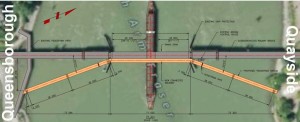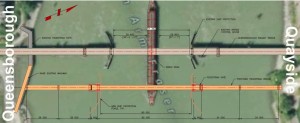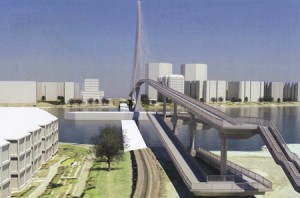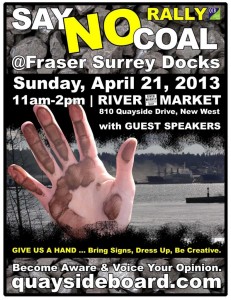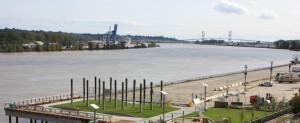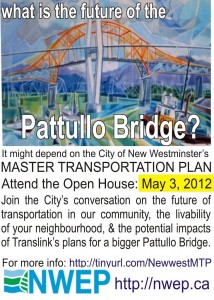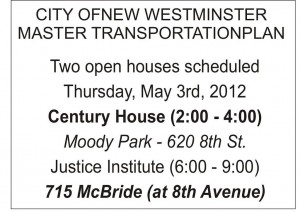The Blog is rarely much of a dialogue. It’s just a place where I shoot out ideas wrapped in questionable grammar. Occasionally, someone comments below, and I might comment back. Mostly however, this is just me spouting off, and never claimed to be anything else.
So some time last week, an extended comment appeared in my e-mail inbox in reference to a post I recently did on the proposed / alleged Q2Q Pedestrian Bridge. As that post obliquely (through an external link) referenced the person who wrote me, I suggested he add it as a “comment” on my blog. He was having technical issues with Blogger’s commenting form, so we agreed I could post it on his behalf. So here I include, in its entirety and exactly as send to me, the comments of one E.C. “Ted” Eddy:
Dear Mr. Nwimby,
Ordinarily, I wouldn’t respond to anything posted on media that isn’t fair and balanced or has a limited following. I decided to make an exception to your NWIMBY BLOG. Feel free to post my first whack-a-mole response to yours.
The tenor of the piece seemed to attempt to paint the Quayside Community as being “NWIMBY” (NOT WELCOME IN MY BACK YARD) with respect to a pedestrian/bicycle crossing to Queensborough. Selective historic references were utilized to underpin that shaky premise. We proceed here to whack some other mythical moles that popped up on your blog.
First Mole – The original Queensborough Ped/cycle crossing had been proposed to cross at Poplar Island in a Queensborough Community Plan of June 2008 – a laudable enterprise that would have opened up Poplar Island as a first Nations eco-tourist destination complete with the entire environmental cleanup paid for by the Federal Gov’t. This is a good idea if it took off from the west side of the Third Avenue Overpass and solicited funds from developers of land on either side of the river. No one at the Quay was against it that I can recall. Indeed, people on the Quay have never been against an interconnection with our Queensborough neighbors.
Second Mole- Your “who could be against it?” hyperlink was an old newspaper article and the number of signatures on the petition has grown to more than 1,000. Recall that same year the city explicitly stated in a report to council they would provide community consultation . You were fair and balanced by repeating the problems of cost, visual pollution, extreme length and destruction of the Children’s Submarine park (which is busier than the Pier Park) but failed to mention the biggest concern that there was none of the promised Public Consultation, Environmental Impact studies, usability report, etc. Indeed when the Quayside Board pressed for these requirements we were rebuffed with the comment that such consultation would create “unnecessary expectations”, or in your parlance more “whining” in any attempts to provide senior’s access, save taxpayer dollars and the only children’s park. One would think that the SRY being chuffed about encroachment should have been uncovered prior to spending any Engineering Study dollars on the three failed overpriced, over engineered and overbearing earlier options -especially in light of the comments by the rail company they wanted completed assurances the rail bridge would be safe. A cost, by the way, that was not established in the original cow pie-in-the-sky bridge proposal.
Third Mole – Your characterization that somehow we, or possibly just me, plays whack-a-mole with all city projects is reflective of your position as an “insider mole” that everything the City proposes is great “grandeur wise” and “cost-wise”. Some of us are more circumspect about creating legacies with taxpayer dollars with neither usage studies nor public consultation. I guess you missed NEWSLEADER JUNE 17th article wherein I was quoted as follows:
“Quayside resident Ted Eddy, an outspoken critic of the earlier verions (sic) of the bridge, says these new designs address many of his concerns — particularly the $5-million option that would pair with the existing rail bidge (sic). This low-level option with the swing bridge looks like it could be a winner,” Eddy said. “I think I could sell this to my [Quayside Community] Board quite easily. We’ve never been opposed to some kind of connectivity.”
Perhaps a correction to your blog is in order.
Forth Mole – The Ferry Service alternative -“show me the business case”. I venture you have not seen any business case from the city on other ventures such as the office tower but I digress. Tom Littlewood’s presentation to the Quayside Community Board a week ago was compelling with no cost to the city. There is a dock already in Queensborough along with two wheelchair accessible/bike-friendly covered ferries in his possession, a suitable dock, purchased by his business partners, for use at the Quay and two years of discussions with the city, in particular the Mayor. All that’s needed is the city to utilize the Port Metro Vancouver offer of up to $100,000 to put a dock near the Fraser River Discovery Centre (whose DAC funds have also been redirected) or at the Inn at the Quay to complete the linkage. Tom’s willingness to proceed is business case enough for me and indeed he has put forth a plan that warrants consideration at little if no cost to the taxpayers of New Westminster. What is the problem with that I ask? We don’t need second guessing, hand wringing or “whining” from City Hall. He needs their cooperation and speedy approval after two years of inaction and their already touted “enthusiasm at all levels” – not a whack-a-mole parade of negatives and hurdles. Who knows, usage of the Ferry Service could provide a proxy for figuring out if a $3,000 per person swing bridge link could be justified. Recall here that car-dependant Queensborough residents have just lost a bus route that was costing about $3.80 per trip to run based on a business case done by TransLink. If the City is to spend more than the $6 million of DAC funding remaining after raiding the DAC funds, specified for other earmarked projects, for another showcase project in cost-overrun mode, then where is that business case?”
All-in-all, I look forward to your portended BLOG on the Water Taxi Option and assume you might want do a little research by perusing the more recent media links that I have conveniently provided in the attached. You might even go to the horse’s mouth, Tom Littlewood (whom I have copied here) rather than continue to BLOG from viewing the past from the other end.
Become a “Ferry godfather” rather than continue to put lipstick on the legacy projects of the “Spinderellas” at City hall.
E.C.”Ted” Eddy
Thank you, Mr. Eddy, for taking the time to express yourself so eloquently. Allow me to retort.
The only reason I would suggest the Quayside Community Board was not enthusiastic about the bridge is that the only vocal opposition I have heard to the idea of the bridge came from a couple of well known and outspoken “leaders” of the QCB. I further suggested this may not be a universal opinion of Quayside residents – and purposely linked to the story where Mr. Eddy expressed tacit approval of the new plans to support that point. I even pointed out that many of those original concerns were very much valid, and should be addressed. I’m just not sure any of them are a game-ender. I also don’t think the Quayside residents speak as a single voice on this issue. I ride with a couple of Quayside folks on a regular basis, and they are anxiously looking forward to the bridge..
First Mole – Actually, the 2008 Queensborough Community Plan documents I could find (and they are all here, scroll to the bottom of the page) only reference the Poplar Island route for the bridge as a possible “backup” plan if the direct route is considered too difficult or impossible. Looking through those documents, it appears that option was not initially considered, but was added to the conversation through community consultation. I have already written a long post about why this is a terrible plan if one is hoping to build this as a useful piece of transportation infrastructure, so I won’t go deeper into that here.
Second Mole – The submarine park will not be destroyed. Council has said they will not destroy it, and as a worst-case scenario, they will move it. The rest of this “Mole” seems to be a criticism about the format of consultations and planning, and we can all have opinions on how those should work in an ideal world. I think Mr. Eddy and I have differing opinions here, and nothing wrong with that. Here is the process best I can figure from watching the media and Council reports:
1) The community has an idea for connectivity that was included in the Queensborough Community Plan in 2009 as a priority;
2) Council secured some funding through DAC with a fairly long planning window;
3) Staff hired some consulting engineers to do an initial assessment, and scope out potential opportunities, problems, and rough costs. Included in this would be general feasibility issues- including Senior government issues location and potential for conflict with the Train Bridge;
4) Recognizing that being close to the Rail Bridge is the best spot, talks with SRY begin to suss out concerns;
5) Take the assessment to Council to seek opinions (after all, they are the elected representatives of the public), and IF council thinks we are on the right track- take it to public consultation;
6) Report out on Pubic consultation, and either move ahead, fix the plan to address public concerns, or go back to Step 1.
It sounds to me like they got to Step 5 and there were enough concerns at Council or problems for staff to iron out (i.e. railway discussions) or enough public negative reaction that they stepped back and re-assessed by going back to Step 3 and re-jigging the plan.
The point is, the plan, such as it was, was clearly not ready for a detailed public consultation, and the new plan may also not quite be there yet (as it sounds like there are some issues to work out with the Port and SRY about how a lift or swing bridge might operate). There is no point going to the public asking them to approve an idea if the Port or another agency will not allow that idea to be built.
Of course, these tentative plans and technical reports are sent up to Council and read into the public record for a reason: so that people like me and Ted Eddy can talk about them and get the public thinking about the project. We also have a Council that allows open delegations- if anyone has a strong opinion about the bridge, or a great alternative model, they should go to Council and use their allotted 5 minutes to make their case to Council. Or write them a letter. Or Blog. This is what the public conversation looks like. I don’t want valuable staff time wasted holding evening “consultation” meetings for a half-baked plan that is not feasible, but this has hardly been a secretive process – both Mr. Eddy and I have seen the plans presented so far.
Third Mole: “Insider Mole” is an interesting accusation. I am afraid everything I know about this project comes from press accounts and reading the reports on the City’s website (and therefore, I am free to admit my knowledge of the project is incomplete), but I have worked for a consulting engineering firm and inside of a City Hall (not New West City Hall, mind you), so I can read between lines with more nuance than some. I am also out and about in the city a lot, so I have occasional conversations with Councillors or Staff, and am not afraid to ask them questions. Hey, I pay their wages, the poor people have to listen to me!
As for the inference that I am secretly working for the City (that’s what an “ insider mole” is, isn’t it?), I can only refer back to several posts on this same blog where I am highly critical of some of the moves this City has made (or refused to make). I call things as I see them, and that includes when I actually agree with the City as much as when i disagree with them.
PS: “Missed” the June 17th Newsleader Article?! I linked to it in the 10th paragraph of my post!
Forth (sic) Mole: I’m not one to challenge Tom Littlewood’s plans. I worked with Tom on the Bicycle and Pedestrian Advisory Committee, and he is indeed a visionary who loves to spread the good word about bicycles and safe cycling infrastructure. However, I think a ferry service is a very different consideration than a bridge.
A fixed bridge provides a reliable, permanent link between the communities, something the City and the burgeoning neighbourhoods of Queensborough can plan around in the long-term (and something the DAC funds were earmarked for). A ferry service (for all its benefits) does not provide this security. It may work great in 2013, but any number of factors (rising fuel costs, change in safety regulations, change in business interest of the owner, unexpected mechanical issues with the floating stock) could make it disappear in a flash. That is not the kind of transportation infrastructure one can plan a community around.
The example of TransLink cutting bus service to Port Royal is a perfect one – a quick business decision made, a transportation link is lost, and the community has no say. This is the biggest reason why I am such a big fan of the fixed bridge, I like to think of the long game when we are talking about building this community.
I don’t want to say more about Tom’s plan until I get a chance to talk to him about it, so I’ll leave it at that. Then maybe I’ll write a blog post about it and other alternatives to the bridge, as previously suggested.
Anyway, thanks for the comments, Mr. Eddy, and feel free to comment below if I have missed any points, or am missing something. You can even do it anonymously, if that suits you…
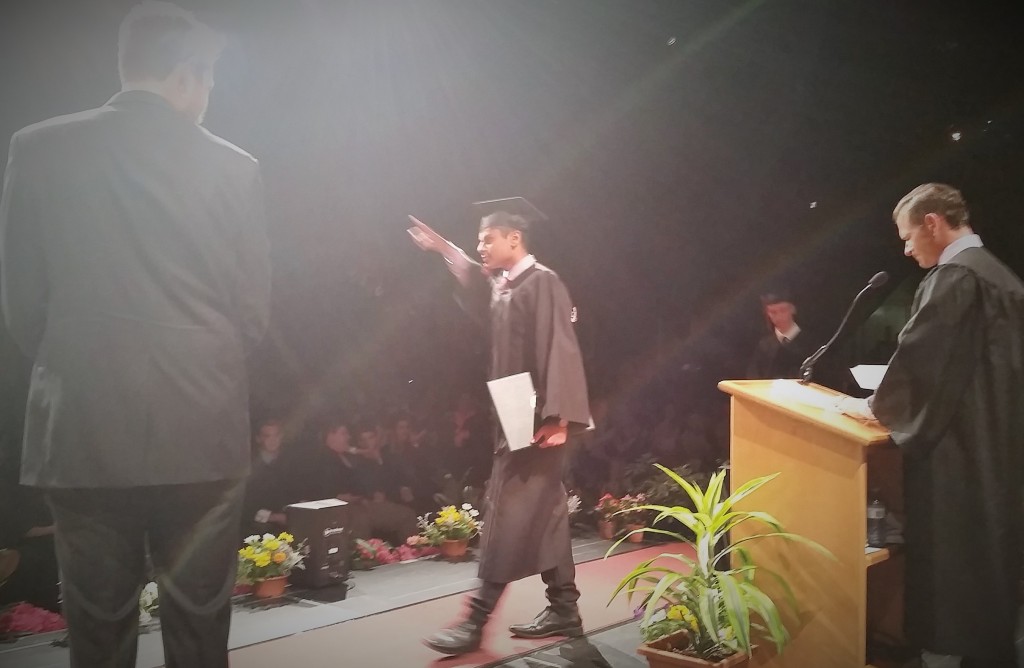 I was only a little chagrined to see that mine was the only bike in the rack, amongst the couple of thousand students, parents, siblings, supporters and dignitaries at Queens Park Arena that night! Well, I guess it was kind of a fancy-dress occasion.
I was only a little chagrined to see that mine was the only bike in the rack, amongst the couple of thousand students, parents, siblings, supporters and dignitaries at Queens Park Arena that night! Well, I guess it was kind of a fancy-dress occasion.
